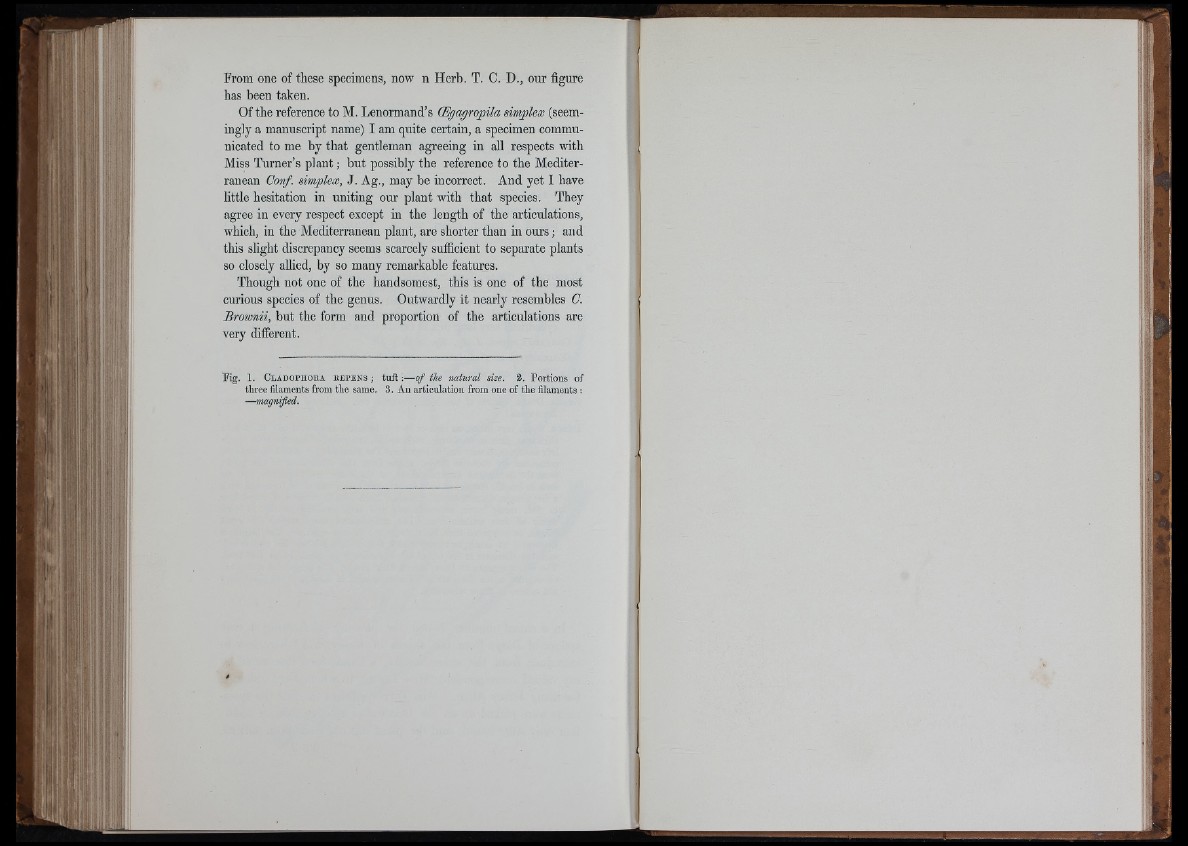
From one of these specimens, now n Herb. T. C. D., our figure
has been taken.
Of the reference to M. Lenormand’s OEgagropüa simplex (seemingly
a manuscript name) I am quite certain, a specimen communicated
to me by that gentleman agreeing in all respects with
Miss Turner’s plant ; but possibly the reference to the Mediterranean
Conf. simplex, J. Ag., may be incorrect. And yet I have
little hesitation in uniting our plant with that species. They
agree in every respect except in the length of the articulations,
which, in the Mediterranean plant, are shorter than in ours ; and
this slight discrepancy seems scarcely sufficient to separate plants
so closely allied, by so many remarkable features.
Though not one of the handsomest, this is one of the most
curious species of the genus. Outwardly it nearly resembles C.
Broimii, but the form and proportion of the articulations are
very différent.
r :
I
Fig. 1. Gl a d o ph o u a r e p e n s ; tu f t:— o f the natural size. 2. Portions of
tliree filaments from the same. 3. An articulation from one of tlie filaments :
iS
I'■ f'il ’;
' '‘‘i'
to?
|!(1
ill..